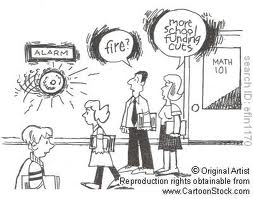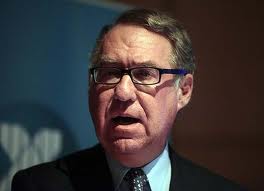
Someone needs to explain to this ignorant Australian how New York could be in this situation. How can New York be in a situation where they feel they are better off letting go of more than 4.650 teachers? How is this possible? Is New York so content with their education system that they think they can make their cutbacks by ridding themselves of talented teachers? Isn’t there other areas of government waste they can focus on instead of this massive cull? That’s what this amounts to – a massive cull. Teachers as expendable livestock!
And what’s worse is they are bound by a law that requires that teachers hired last are the first ones to be laid off, regardless of their effectiveness.
“I’m sorry, you’re doing a brilliant job and have been a source of inspiration to your students, but because we only hired you recently, we have to let you go.”
Teacher morale has always been an oxymoron, but this would be doing so much damage to teachers, their families, students and schools. Take this case for example:
This is Stany Leblanc’s second year as a New York City teacher. It may also be his last.
When Mr. Leblanc’s sixth-grade students arrived in September for their first day of school in the South Bronx, they were on average two years behind in writing skills and more than a year behind in reading.
To inspire his poor, black and Hispanic charges to read, Mr. Leblanc has found books that are relevant to many of their lives. Students whose homes are too chaotic for studying find in his classroom a quiet place to work long before school in the mornings and well after the school day is done. He pushes students to write essays every week and groups them into teams named after colleges, so they remember every day what they are working toward.
Five months later, his sixth-graders are reading and writing at the sixth-grade level. “I’ve already caught them up and now I’m moving them beyond,” he said.
More than 4,650 teachers are expected to be laid off at the end of this school year, according to Mayor Michael Bloomberg‘s preliminary budget. State law requires that teachers hired last are the first ones to be laid off, regardless of their effectiveness.
That would make Mr. Leblanc, who began teaching in 2009 and earns $45,000 a year, vulnerable to being among the first to go among a citywide teaching corps of nearly 80,000.
His school is vulnerable, too. More than 200 new schools have been created in New York City in recent years to replace large, dysfunctional schools where too many children were failing. These new schools tend to have teachers with less experience.
The location of Mr. Leblanc’s school in a poor neighborhood is a factor as well. Schools in poor districts tend to have newer teachers, as teachers with greater seniority tend not to want to work there. The Department of Education has said low-income communities will be among the hardest hit by teacher layoffs, places where children can least afford to lose their teachers.
“It’s going to be devastating to the culture” of the school, said Mr. Leblanc’s boss, Patrick Awosogba, the principal and founder of Science & Technology Academy: A Mott Hall School. Dr. Awosogba carefully picked each of his 25 teachers, building a team of educators who work well together and often pitch in at each other’s classrooms to offer help and advice.
Am I misreading the situation? Is Mr. Bloomberg’s initiative necessary? Why is a profession with relative job security worldwide suffering from such insecurity in New York? How do you get a situation where 4,650 teachers required one year are no longer required the next?
Sounds like another case of treating teachers like livestock!






